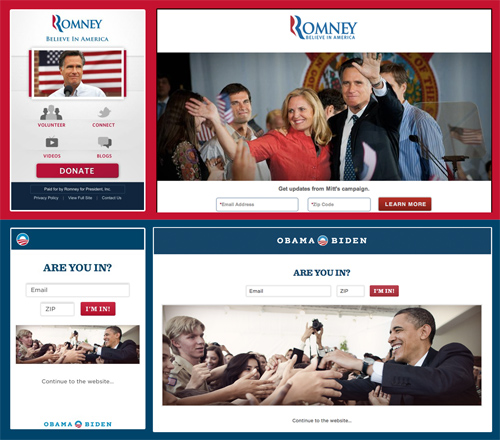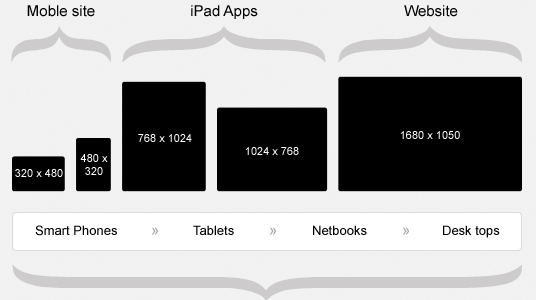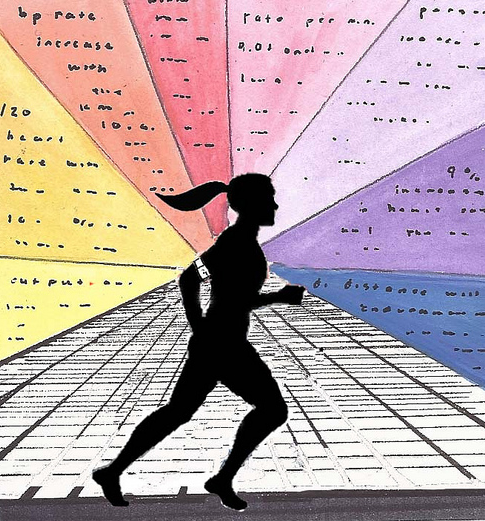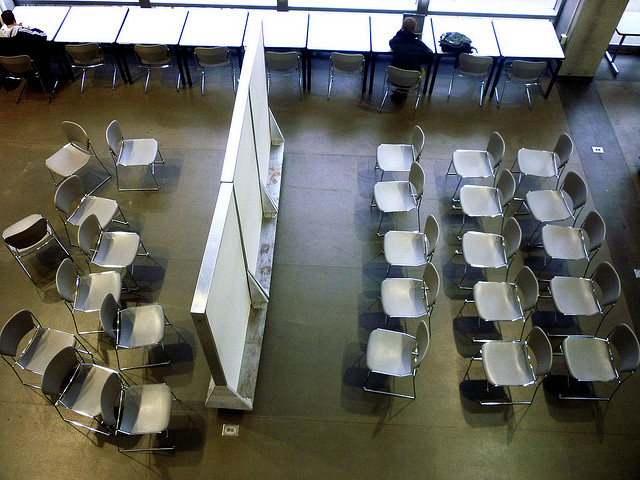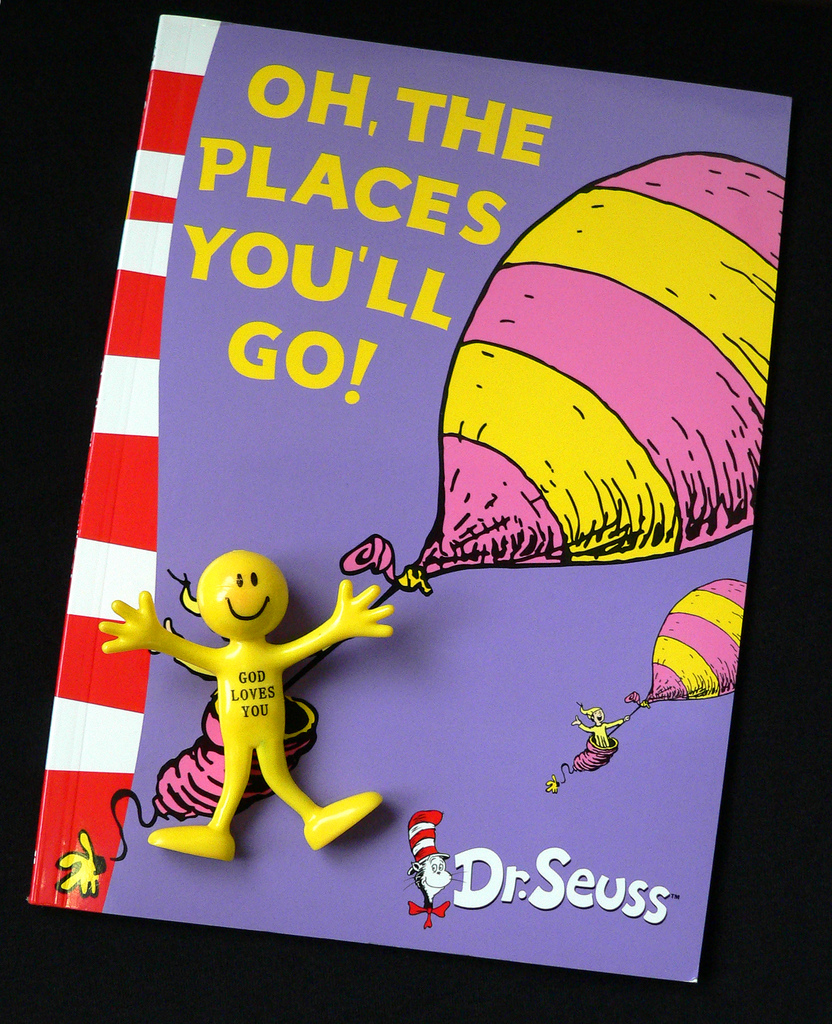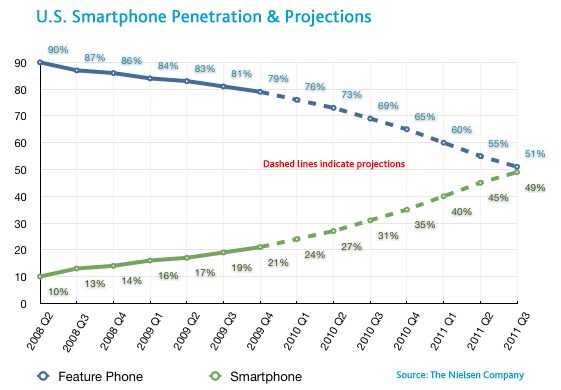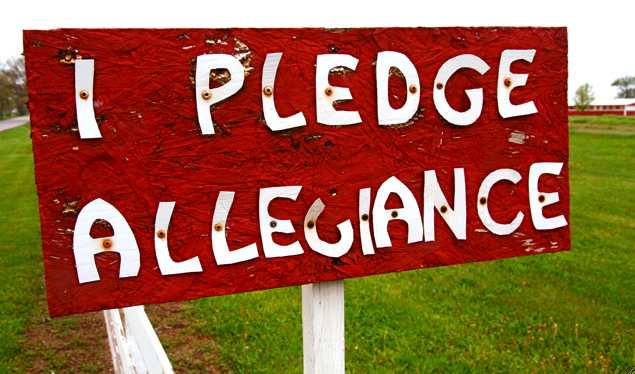While the candidates themselves call upon differing mobile strategies, it appears they aren’t the only ones to disagree. When it comes to mobile, where do you stand?
Think “Mobile First”
While many of us can agree with a “mobile first” approach (hopefully, right?), actually moving forward and implementing a particular mobile strategy is another ballgame. Note: For those still working within their organizations or with stakeholders to understand the importance of mobile, keep going. You’re not alone, and we thank you. All the people who have a phone yet not a toilet, thank you.
Not only is the “mobile first” mantra a cornerstone of the new Digital Government Strategy, but it’s also a strategic decision adopted by an increasing number of organizations. From Google to Salesforce and now Facebook, more companies are going “mobile first” when it comes to designing and developing web products, services and features.
OK – But Then What?
Some organizations take “mobile first” a step further by deciding to go “all responsive, all the time.” Others, are mobile site ambassadors while others say “it depends” and some have yet to decide (or scarily, even discuss!).
In a wonderful display of responsive design, AIDS.gov unveiled its new website as one of the first Federal agencies to go fully responsive. Rhode Island also has a beautiful responsive design that follows suit. Responsive design even gets a nod in the Digital Government Strategy defined as a method of designing content so that it can be re-sized to fit on various screen sizes (e.g. designing a service to work well on both a laptop screen and a smartphone, without the need to design and maintain separate “standard” and “mobile” sites). So, wherein lies the rub?
Responsive Design vs. a Mobile Site
Jacob Nielson, a long-time usability advocate, greatly recognized for his expertise in web design and development, says not so fast. In April, Nielson advised organizations to:
“Build a separate mobile-optimized site (or mobile site) if you can afford it. When people access sites using mobile devices, their measured usability is much higher for mobile sites than for full sites. A mobile app might be even better – at least for now.”
Interesting. To further complicate things, Nielson throws in the app option as well – which we could get lost in debating the benefit and value in native apps vs. Web apps. To some of you, you might be even more confused thinking you understand “mobile first” and now find yourself weeding through the various options not sure what to do.
You’re not alone. In Smashing Magazine’s breakdown on Obama’s mobile strategy versus Romney’s (which is an excellent read that compares the pros and cons in choosing responsive design compared to a separate mobile site), author Brad Frost may capture it best when he says “this stuff is genuinely hard.” It takes thinking and discussion. And not everyone agrees. In fact, one advisor says “experience first” is a better positioning of the “mobile first” mindset. My advice: Start the conversation. Learn your options. Prototype. Test. Keep talking. Start.
Are you Appy?
It’s also worth noting that while Obama solicits a responsive design approach and Romney a separate mobile site, both also have their own apps as well. The plot thickens.
In the August 27, 2012 edition of Times Magazine, the article “Elections Will Never Be the Same” discusses how the future of politics is literally, in our hands. Brilliantly highlighting various features in both Obama’s and Romney’s apps, there is much here to offer for the public health professional. Hint: It involves mobilizing online advocacy through technology, networks and people. But that’s a post for another day…
Share: Given your options, where do you stand on “mobile first” and mobile strategy?
Bonus: For those interested, this Federal Computing Week article compares Obama’s overall digital campaign strategy with that of Romney’s.
